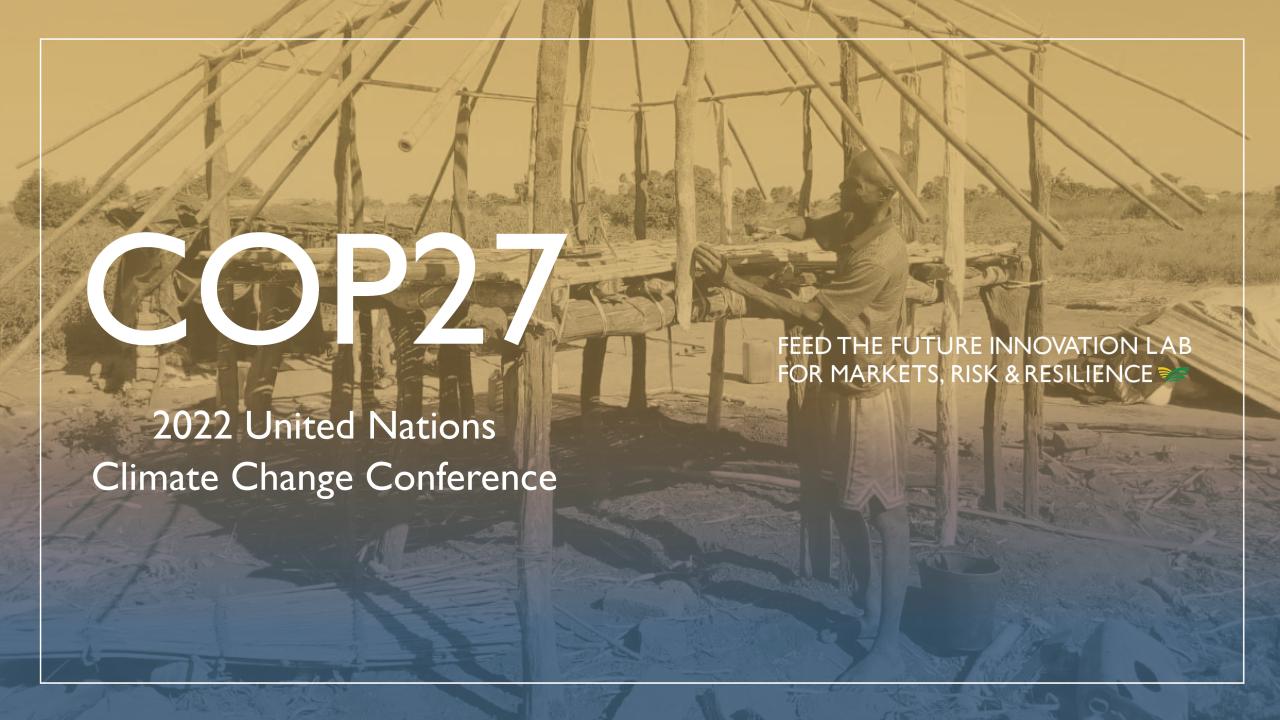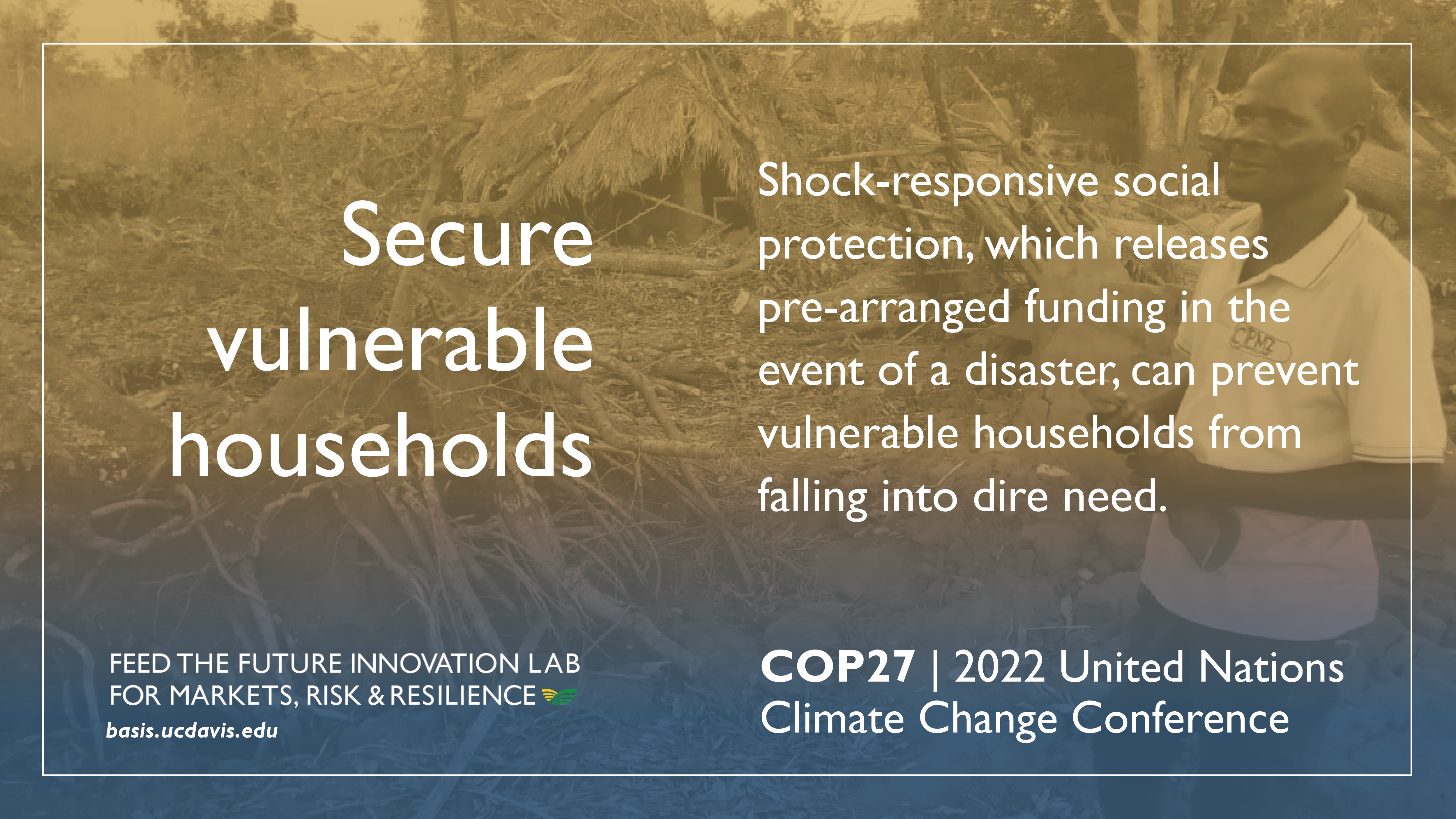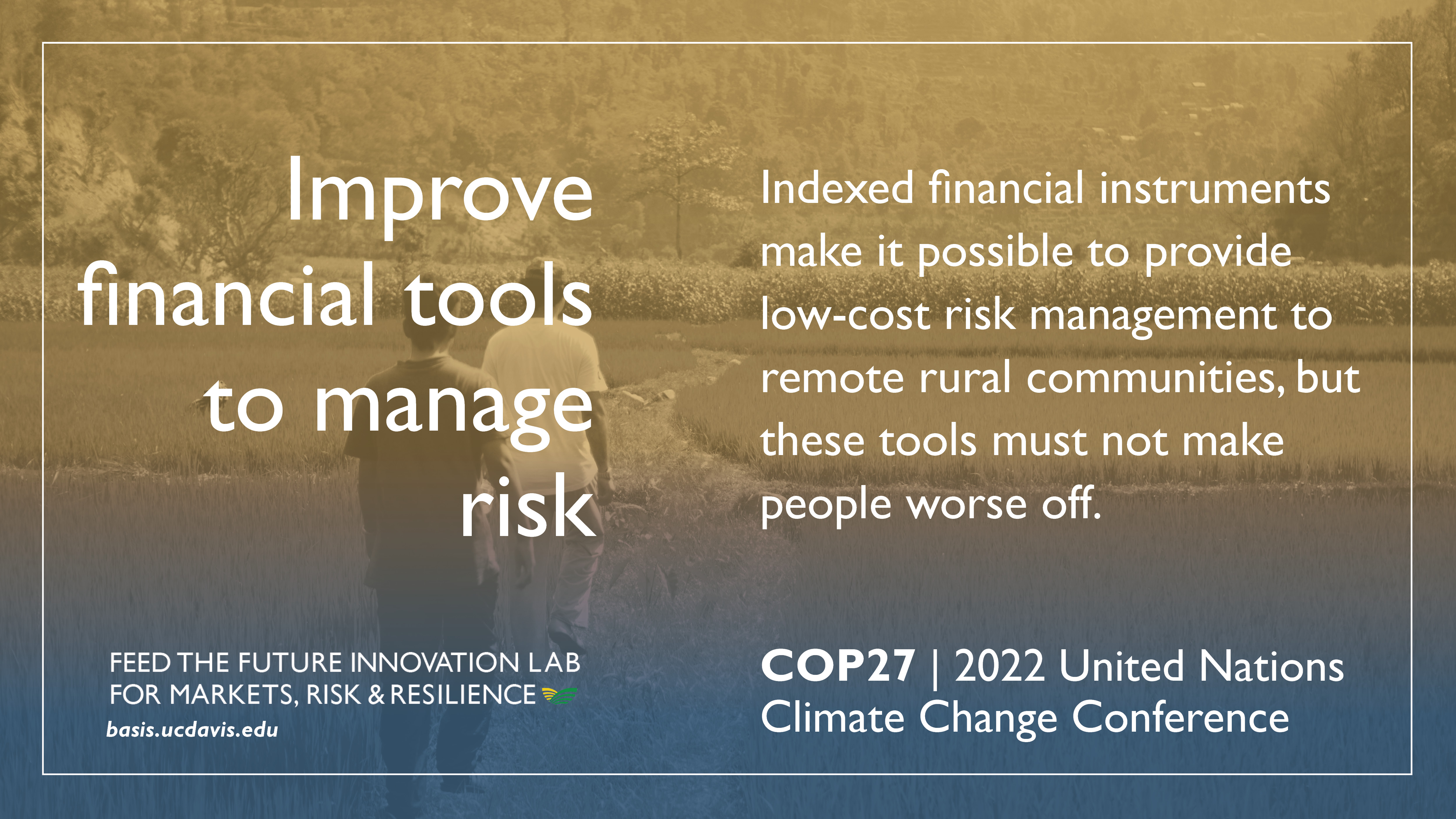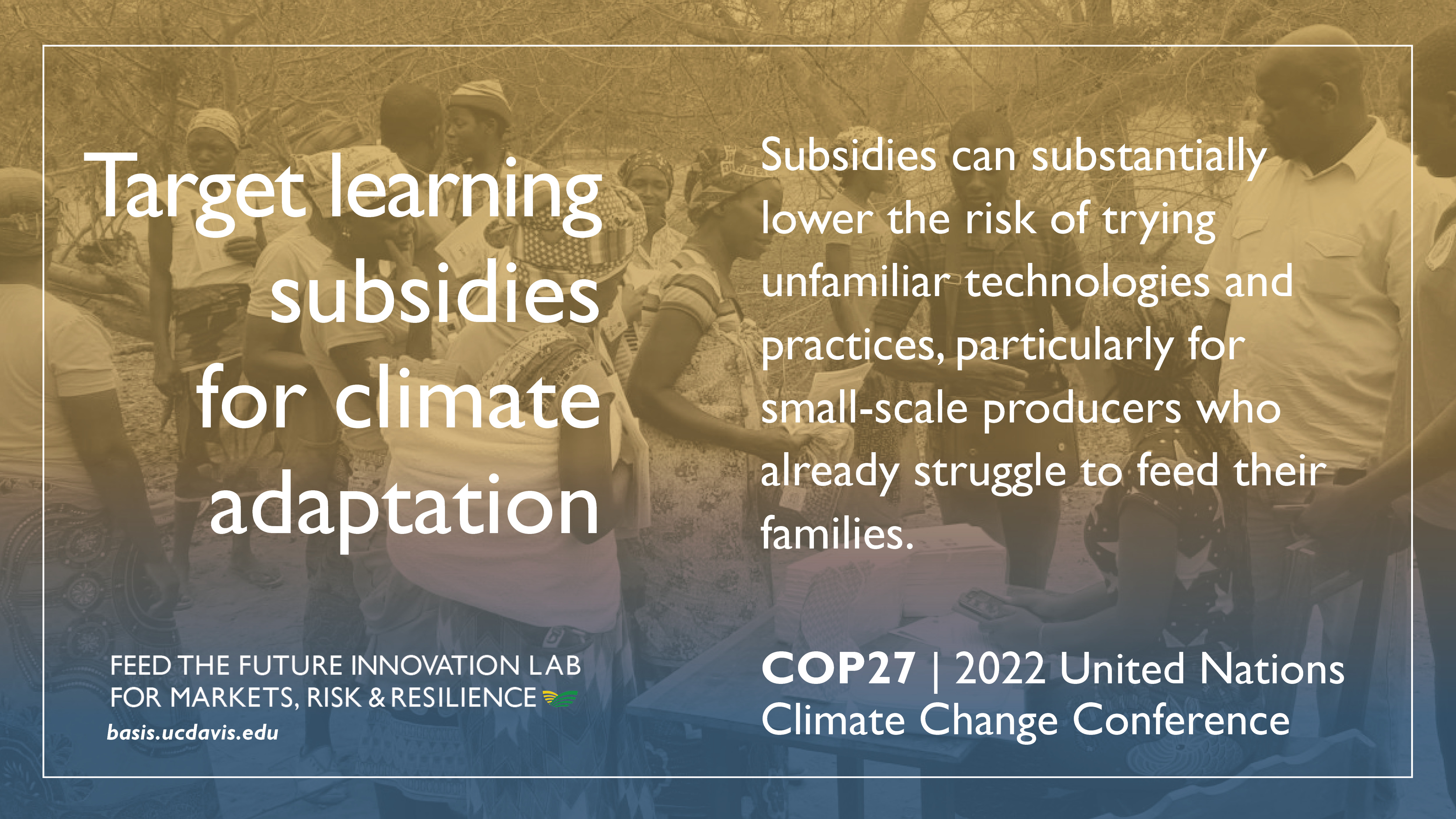
COP27: Jumpstart Smallholder Climate Adaptation by Addressing Risk
Few are more vulnerable to climate change than people who earn their living through small-scale agriculture. Climate change drove this year’s catastrophic flooding in Pakistan, Nigeria and many other nations. Climate change is also driving extreme and ongoing drought in East Africa.
The Resilience+ Approach to Development
Smallholder farmers and pastoralists in Africa and South Asia face an increasing risk of extreme weather like drought or flood that in any year can destroy their livelihoods. Facing these risks, small-scale producers hold back from investing their scarce resources into improved practices or crop varieties because they can’t risk losing everything.
When financial or agronomic tools reduce losses or provide support when times are bad, people make those investments. In bad years, people are protected from the worst outcomes. In good years, they reap the rewards of their investments. These two together—resilience to shocks and investments that drive higher productivity—are Resilience+.
If COP27 discussions include climate action, they must include solutions for smallholder farmer and pastoralist communities who are most at risk. For these communities, humanitarian aid is critical in responding to a disaster. However, on its own aid does not address how the risk of a disaster in itself causes hardship.
It’s been well-established that climate risk puts more productive inputs and practices out of reach for vulnerable rural households because there is always a chance of losing everything in a bad year. However, rigorous field research shows that financial and agricultural technologies that reduce climate risk can both increase resilience in a bad year, and this sense of protection frees up households to make investments that transform their livelihoods.
The Feed the Future Innovation Lab for Markets, Risk & Resilience calls these dual benefits—protection in a disaster and increased productivity in good years—Resilience+. A Resilience+ approach to development is more critical than ever as climate change puts more households at an increasing risk of disaster.
Rigorous, field-tested evidence provides a roadmap for achieving Resilience+. For COP27, three key ideas can jumpstart climate adaptation by addressing risk in rural communities most impacted by climate change.

Secure vulnerable households
Humanitarian aid is critical in a climate disaster. However, a reactive approach alone leaves vulnerable households waiting for aid. Shock-responsive social protection, which releases pre-arranged funding in the event of a disaster, can prevent vulnerable households from falling into dire need.
Insurance is the most proven tool for providing shock-responsive social protection, and index-based agricultural and livestock insurance has made the coverage affordable and accessible. A recent study calibrated to northern Kenya found that insurance-based social protection had the greatest long-term potential to reduce the total number of households in need of emergency aid.

Improve financial tools to manage risk
Indexed financial instruments make it possible to provide low-cost risk management to remote rural communities. The most prominent of these tools is index-based crop and livestock insurance but also include new instruments such as a contingent loan and even savings accounts that release interest based on an index.
When rural households with these instruments believe they will be protected in a disaster, they tend to invest more into production for higher yields and income. This combined benefit is the definition of Resilience+. In one example from field research, a study testing emergency loans in Bangladesh found that pre-approved households increased their rice planting by 33 percent. In another study in East Africa, maize farmers nearly doubled their investments in improved seeds the year after their insured seeds were replaced for severe drought.
However, to achieve these kinds of impacts, indexed financial instruments must meet a minimum level of quality and not leave people worse off. The Minimum Quality Standard for index insurance, developed at UC Davis with support from USAID, tests objectively whether a product is likely to leave a household worse off for having purchased it. MQS also shows how to improve a product to achieve minimum quality.

Target learning subsidies for climate adaptation
Many of the most effective means of climate adaptation, such as insurance or even sustainable agricultural practices, meet slow adoption among households they would benefit most. People need ways to learn for themselves how these approaches work. Subsidies can substantially lower the risk of this learning, particularly for small-scale producers who already struggle to feed their families.
Subsidies can be especially powerful when the subsidized technology provides visible benefits that neighbors who didn’t receive a subsidy can see. In Malawi, the strongest predictor of a farmer adopting conservation agriculture practices was whether their neighbors already had. In Mozambique, the largest increase in maize yields for a temporary fertilizer subsidy were among nearby neighbors who received no subsidy at all. A study in China found similar patterns when testing index insurance.
Subsidies are also critical for technologies designed to manage climate risk. While a disaster doesn’t come every year, the cost to stay insured does. For these types of technologies, a subsidy may be required until a farmer has the opportunity to both experience and understand a new technology’s true, lasting benefits.
Media Contacts
Michael Carter, mrcarter@ucdavis.edu
Director, Feed the Future Innovation Lab for Markets, Risk & Resilience
Alex Russell, parussell@ucdavis.edu
Strategic Communications Manager, Feed the Future Innovation Lab for Markets, Risk & Resilience
